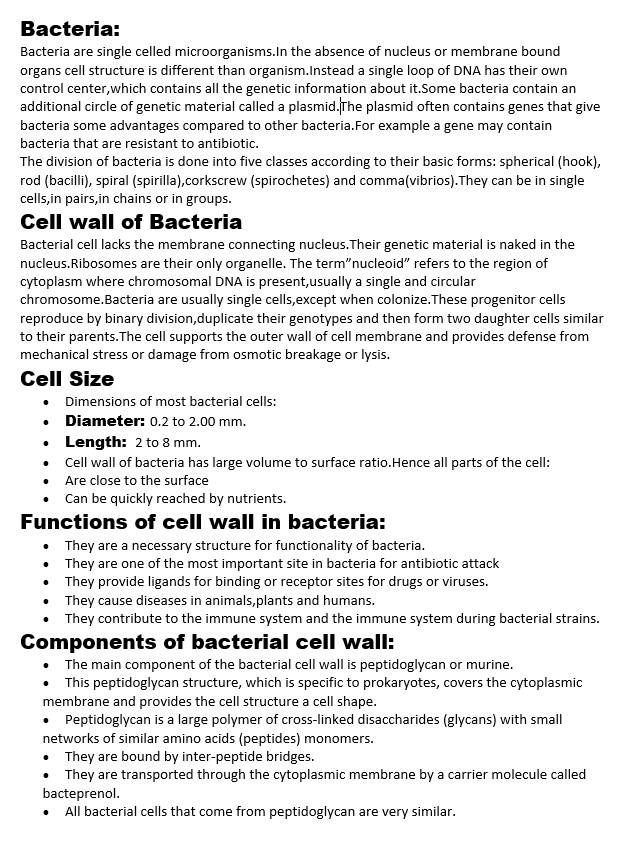Overview of Bacterial Structure and Functions
Summary:
Bacteria, single-celled organisms without a nucleus, are classified into five types based on shape: spherical, rod, spiral, corkscrew, and comma. Their DNA forms a single loop, and some have an additional genetic material called a plasmid, providing advantages such as antibiotic resistance. Bacterial cells, usually solitary, reproduce by binary division. Their cell wall, containing ribosomes and genetic material, is crucial for defence against external stress. Bacterial cell size ranges between 0.2 to 2.00 mm in diameter and 2 to 8 mm in length. The main component of the bacterial cell wall is peptidoglycan, providing structure and shape. The cell wall also hosts receptor sites for drugs or viruses. Peptidoglycan, comprising N-acetylglucosamine (NAG) and N-acetyl muramic acid (NAM), forms a lattice-like structure with tetrapeptides. Differences exist between gram-positive and gram-negative cell walls in terms of structure and composition. Bacteria’s metabolic behaviour classifies them into various groups, depending on their interaction with oxygen and their source of carbon and energy. Autotrophs derive carbon from CO2, while heterotrophs obtain it from organic substances. Autotrophs further divide into photoautotrophs and chemoautotrophs, and heterotrophs into photoheterotrophs and chemoheterotrophs.
Excerpt:
Overview of Bacterial Structure and Functions
Bacteria:
Bacteria are single-celled microorganisms. In the absence of a nucleus or membrane-bound organs, the cell structure is different from the organisms. Instead, a single loop of DNA has their own control centre, which contains all the genetic information about it. Some bacteria contain an additional circle of genetic material called a plasmid. The plasmid often contains genes that give bacteria some advantages compared to other bacteria. For example, a gene may contain bacteria that are resistant to antibiotics.
The division of bacteria is done into five classes according to their basic forms: spherical (hook), rod (bacilli), spiral (spirilla), corkscrew (spirochetes) and comma(vibrios). They can be in single cells, in pairs, in chains or in groups.
The Cell Wall of Bacteria
Bacterial cell lacks the membrane connecting the nucleus. Their genetic material is naked in the nucleus. Ribosomes are their only organelle. The term” nucleoid” refers to the region of cytoplasm where chromosomal DNA is present, usually a single and circular chromosome. Bacteria are usually single cells, except when colonize.


Reviews